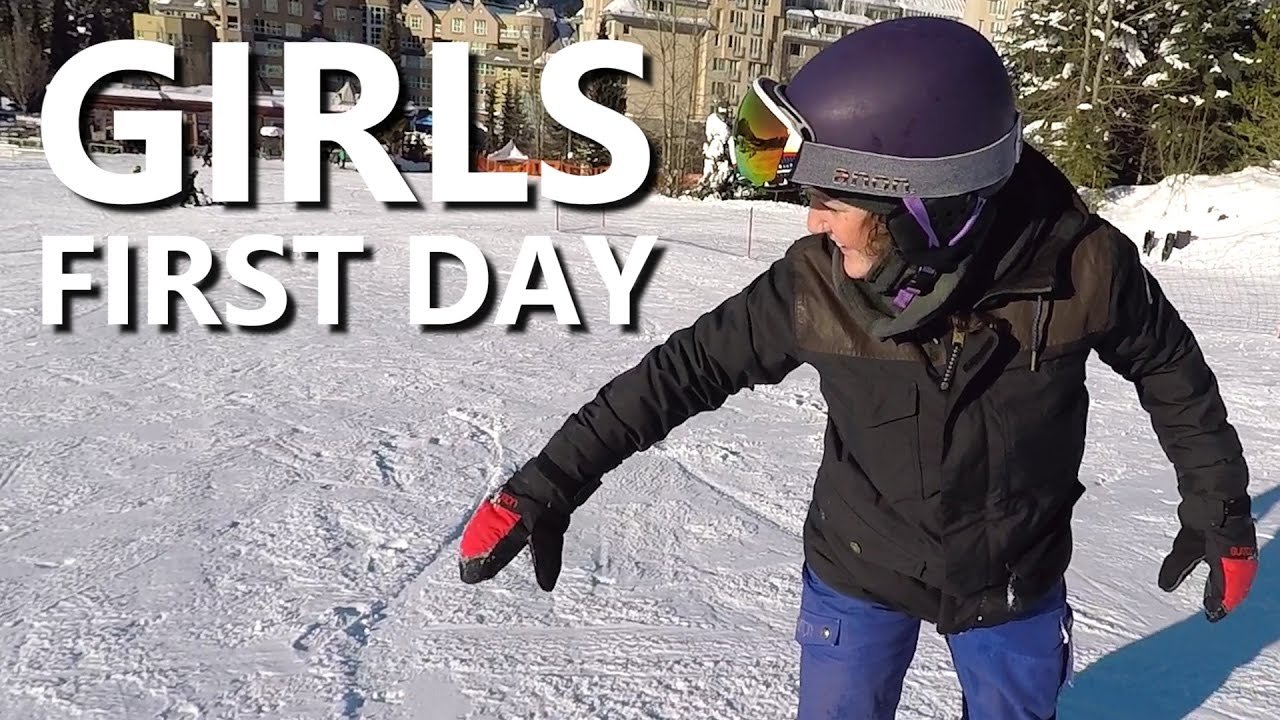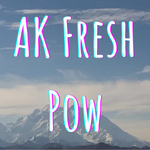
Girls First Day Snowboarding – Beginner Snowboard Tips
In this video by SnowboardProCamp, three friends are taken through the steps of beginner snowboarding. The article highlights the importance of properly setting up snowboarding gear, particularly tightening the snowboard boots and ensuring the snowboard is set up correctly. The girls then learn how to determine their front foot and practice skating and snowboarding with one foot strapped in. They progress to practicing heel and toe sliding and eventually attempt beginner snowboard turns, with some initial assistance and a few small crashes, but ultimately linking a few turns together. The article concludes by encouraging viewers to check out the beginner snowboarding playlist for more tips and leaving any questions about their first day of snowboarding in the comments.
Gear Check
Importance of properly tightened snowboard boots
When it comes to snowboarding, having properly tightened boots is crucial. The way your boots are tightened can greatly affect your performance and overall experience on the slopes. If your boots are too loose, you may not have enough control or stability, which can lead to accidents or difficulty executing turns. On the other hand, if your boots are too tight, it can cause discomfort and pain, making it difficult to concentrate on your technique. By properly tightening your snowboard boots, you can ensure a snug and secure fit, allowing for optimal control and comfort while riding.
Importance of proper snowboard setup
In addition to properly tightened boots, having a correctly set up snowboard is equally important. The setup of your snowboard refers to the positioning and adjustment of various components, such as bindings and stance width. A proper snowboard setup can greatly impact your balance, stability, and maneuverability on the mountain. For instance, if your bindings are not aligned correctly or your stance width is too narrow or wide, it can throw off your balance and make it more difficult to initiate turns or maintain control. By taking the time to properly set up your snowboard, you can optimize your performance and ensure a more enjoyable snowboarding experience.
Finding the Front Foot
Determining the dominant foot
Before hitting the slopes, it’s important to determine your dominant foot, also known as your front foot, in snowboarding. Your dominant foot is the foot you naturally use for balance and stability. There are a few methods to determine your dominant foot, but in this video, the snowboarders used a simple yet effective technique – running and sliding in the snow. By observing which foot naturally stepped forward and felt more comfortable during this activity, they were able to identify their dominant foot.
Positioning the dominant foot in front
Once you have determined your dominant foot, it’s crucial to position it in the front when learning beginner snowboard turns. The front foot plays a significant role in steering and initiating turns, while the back foot provides stability and balance. By placing your dominant foot in the front, you can maximize your control and maneuverability on the slopes. It may take some time to get used to having your dominant foot in front, especially if you are accustomed to having your dominant foot in the back for other sports or activities, but with practice, it will become more natural and comfortable.
Practicing Skating
Skating with one foot strapped in
Skating is an essential skill in snowboarding, as it allows you to navigate flat terrain or move around on the mountain without strapping both feet into your snowboard. To practice skating, the snowboarders in the video started by strapping one foot into their snowboard while leaving the other foot free. This technique allows for greater mobility and balance while pushing yourself forward with the free foot, simulating the motion of skating. By practicing this skating technique, you can build strength in your legs, improve your balance, and develop a better sense of control on your snowboard.
Preparing for getting off the chairlift
Skating with one foot strapped in is not only a helpful skill for navigating flat terrain but also comes in handy when getting off the chairlift. When approaching the chairlift, it is common practice to have one foot free and unstrapped while riding the lift. By having one foot free, you can maintain balance and stability when exiting the chairlift and start skating away without any difficulty. Practicing skating with one foot strapped in prepares you for this process and ensures a smooth and confident exit from the chairlift.

Heel and Toe Sliding
Practicing sliding with both feet strapped in
Heel and toe sliding are fundamental techniques in snowboarding that allow you to control your speed and change direction on the mountain. To practice these techniques, the snowboarders in the video strapped both feet into their snowboards and focused on sliding down the slope using their heels and toes. By shifting their weight and applying pressure on either the heel or toe edge of the snowboard, they were able to initiate slides and control their movements. This exercise helps to develop a better understanding of how the snowboard responds to different pressure points and teaches you to adjust your balance accordingly.
Learning to stop and change direction
Sliding with both feet strapped in not only helps you understand how to control your snowboard but also teaches you how to stop and change direction effectively. By using your heels and toes to initiate slides, you can slow down or bring yourself to a complete stop when necessary. Additionally, this sliding technique allows you to transition from one direction to another smoothly and efficiently. Learning to stop and change direction is crucial for maintaining control and avoiding collisions or accidents on the slopes. With practice and patience, you can become proficient in these techniques and have more confidence while snowboarding.
Beginner Snowboard Turns
Steps for performing beginner snowboard turns
Once you have mastered basic sliding techniques, you can progress to performing beginner snowboard turns. In the video, the snowboarders followed a step-by-step process to execute their turns successfully. They started by initiating turns with gentle pressure on their front foot and engaging their heel or toe edge to guide the snowboard in the desired direction. They then focused on shifting their weight and maintaining balance throughout the turn, keeping their body aligned with the snowboard. By practicing these steps repeatedly, they were able to improve their turns and develop more fluid transitions between each one.
Assistance and overcoming small crashes
While learning beginner snowboard turns, it’s common to encounter challenges or experience small crashes along the way. It’s important to remember that falling is part of the learning process, and with the right mindset and perseverance, you can overcome these obstacles. In the video, the snowboarders received assistance from their instructor who provided guidance and support during their initial attempts. They also encouraged each other and remained positive, which helped them overcome any fear or frustration. By embracing the learning curve and staying determined, they were able to progress and link a few turns together successfully.
Linking Turns
Progression to linking multiple turns
Linking turns is a significant milestone in snowboarding, as it allows for smoother and more continuous descents down the mountain. Once you have become comfortable with beginner snowboard turns, you can progress to linking multiple turns together. This involves smoothly transitioning from one turn to the next without any pauses or breaks in between. The snowboarders in the video demonstrated this progression by practicing their turns consecutively and gradually increasing their speed and fluidity. Linking turns requires coordination, balance, and precise weight shifting, but with practice and patience, you can achieve seamless transitions and maintain a consistent rhythm while snowboarding.
Success of all three girls in linking turns
In the video, all three girls successfully linked a few turns together after some initial attempts and small crashes. Their determination, practice, and guidance from their instructor paid off as they were able to demonstrate the progress they had made throughout the day. The confidence and excitement they felt after linking their turns were evident, showcasing the joy and sense of accomplishment that comes with learning to snowboard. Their success serves as motivation for others who may be starting their snowboarding journey and encourages them to keep persevering and striving for improvement.
Beginner Snowboarding Tips Playlist
Access to more beginner snowboarding tips
For those looking for additional beginner snowboarding tips and guidance, the video mentions a beginner snowboarding tips playlist. This playlist likely contains a collection of videos that cover various topics and techniques relevant to beginner snowboarders. By accessing this playlist, viewers can continue their learning journey and gain more insights and knowledge about snowboarding. Learning from additional resources, such as tutorials and demonstrations, can further enhance one’s understanding and skills in snowboarding, ultimately enabling them to progress and enjoy the sport even more.
Questions and Comments
Offering audience engagement
At the end of the video, the audience is invited to leave any questions or comments they may have about their first day of snowboarding. This engagement encourages viewers to actively participate and seek further clarification or advice if needed. Snowboarding can be a complex and challenging sport, especially for beginners, so having a platform to ask questions and receive guidance is invaluable. It also creates a sense of community and support within the snowboarding community, as fellow enthusiasts can share their experiences, tips, and encouragement.
Addressing potential inquiries
By inviting questions and comments, the video opens the door for addressing potential inquiries that viewers may have. These inquiries could range from general snowboarding tips and techniques to more specific questions about certain exercises or equipment. The video creator can use this opportunity to respond to the most frequently asked questions, offer additional advice, or provide further explanations on certain topics. Addressing these inquiries helps to foster a sense of trust and credibility within the audience and ensures that viewers receive accurate and helpful information to enhance their snowboarding experience.
Conclusion
Learning to snowboard can be an exciting and rewarding experience, especially for beginners. By following the steps and techniques outlined in this video, such as properly tightening snowboard boots, determining the dominant foot, practicing skating, heel and toe sliding, and performing beginner snowboard turns, beginners can progress and develop their skills on the slopes. The success of the three girls in linking turns serves as motivation and inspiration for others embarking on their snowboarding journey. And with access to additional beginner snowboarding tips and the opportunity to engage with fellow snowboarders, beginners can continue to expand their knowledge and expertise in the sport. So grab your gear, hit the slopes, and enjoy the thrill of snowboarding!
